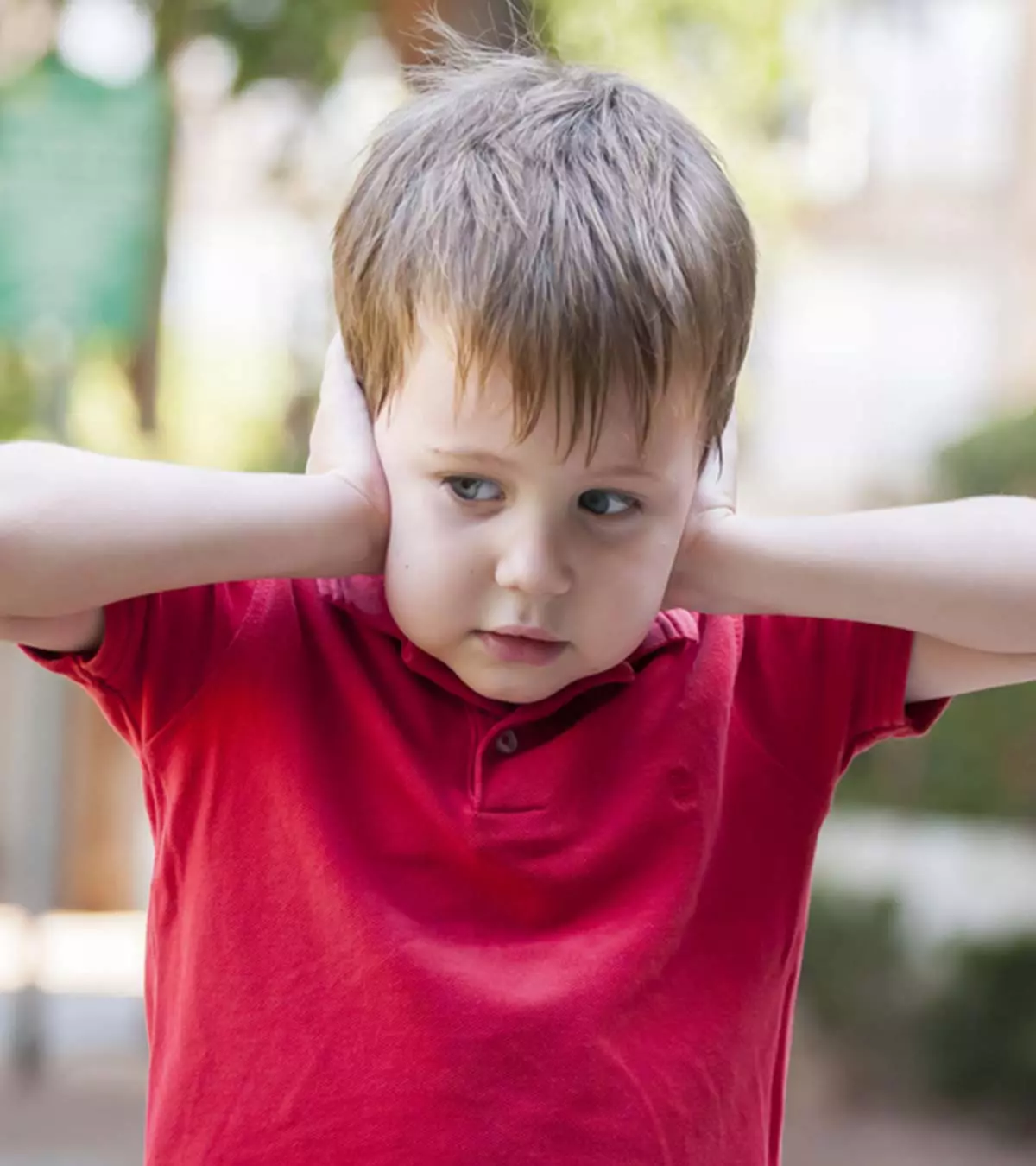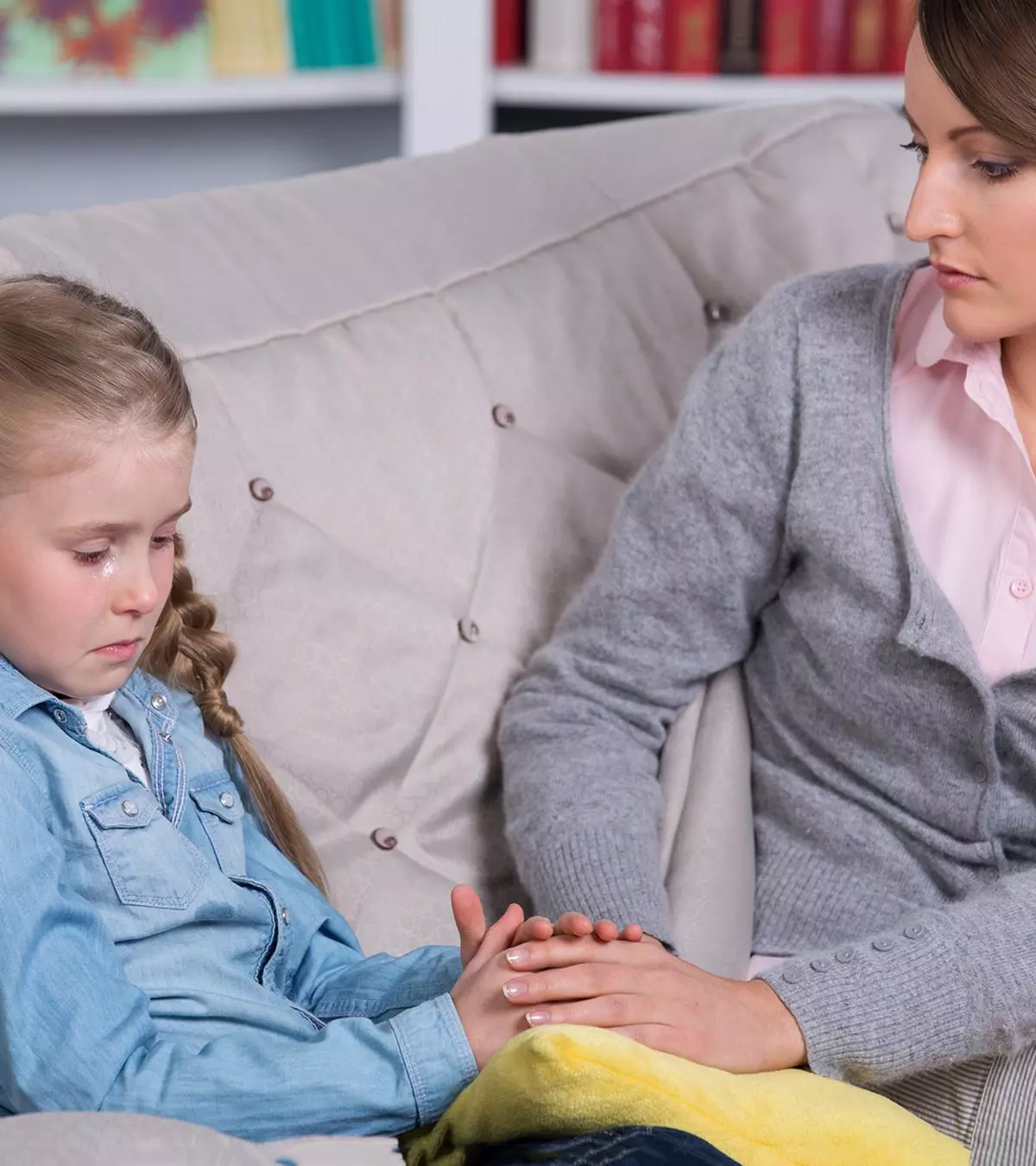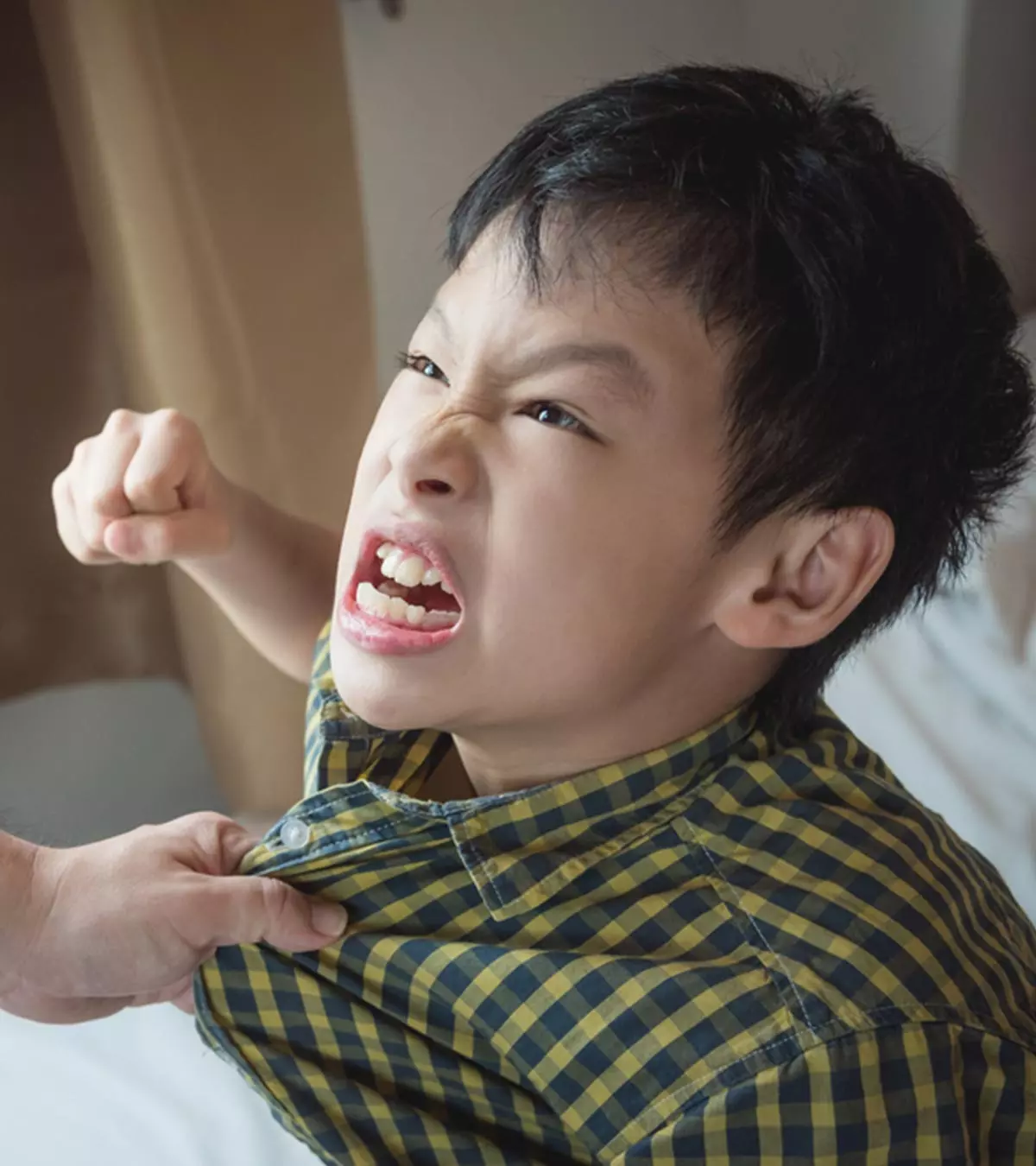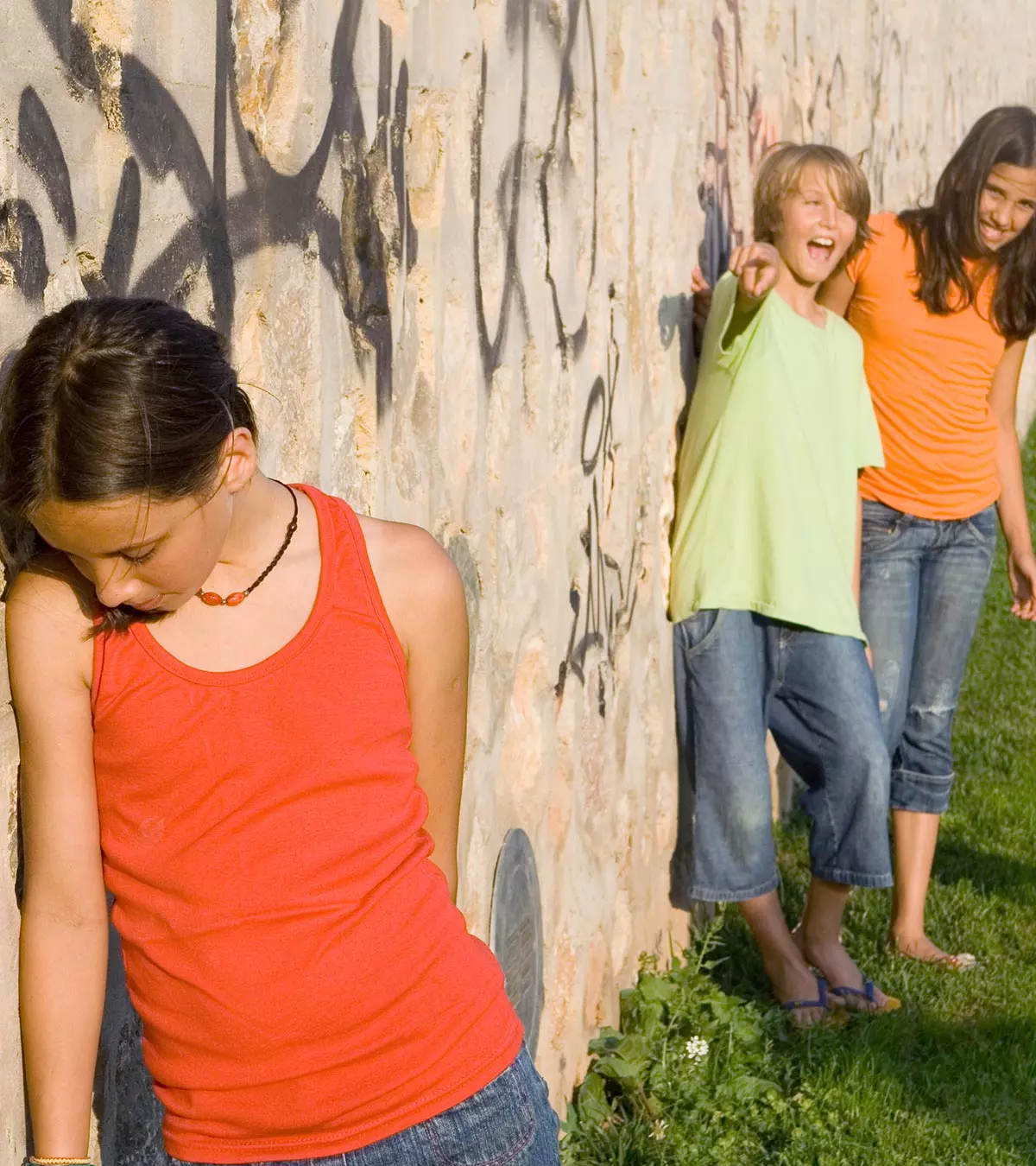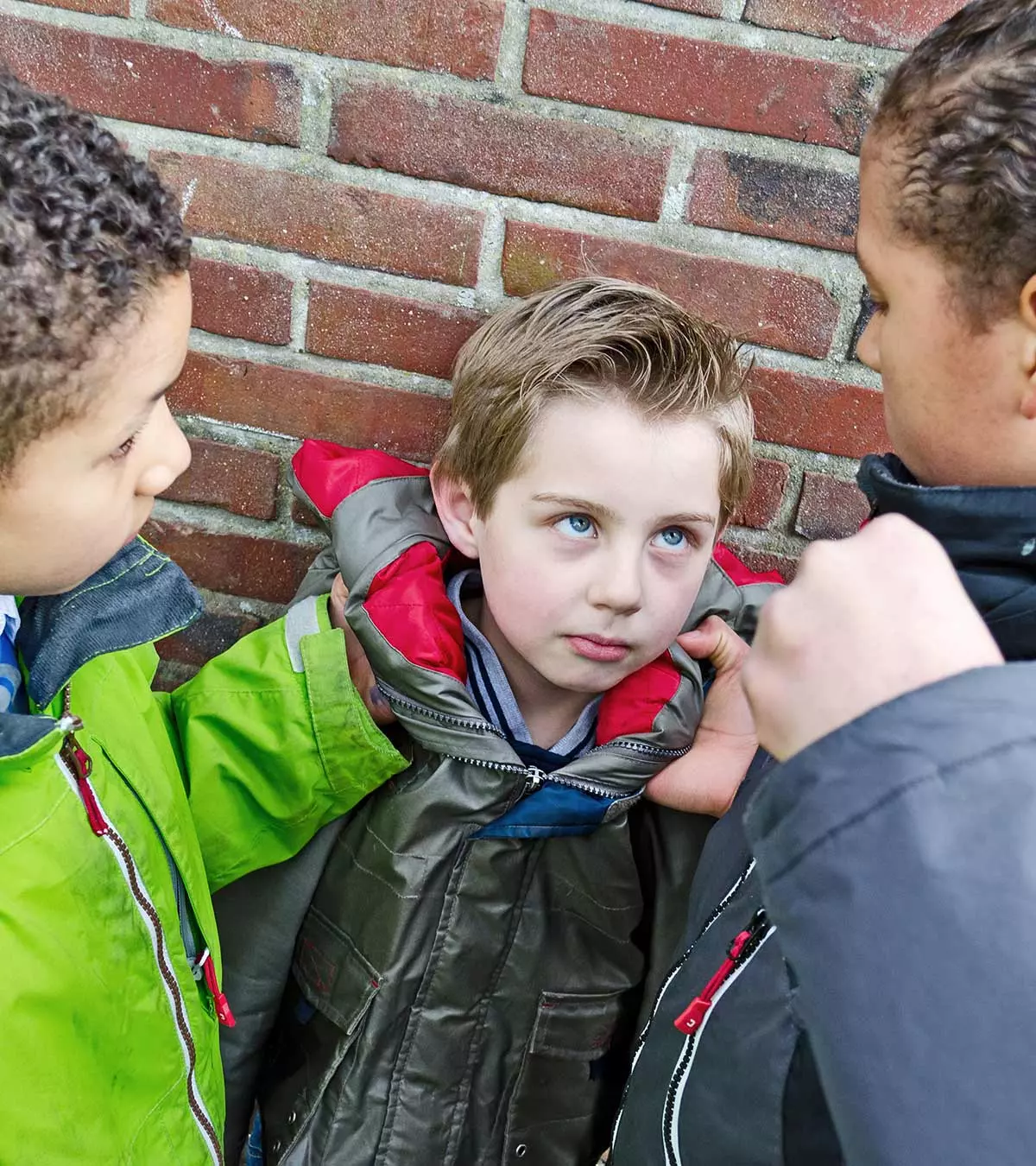
Image: Shutterstock
It is not uncommon for parents to have safety-related concerns for their school-going children. Also, with the growing reports of children being subjected to inhuman acts at school, it is paramount to implement effective ways to stop school violence. If you notice any significant changes in your child’s emotional or physical aspects, you must talk to them to ensure they are in safe environments at school. Continue to read this post if you want to understand the types, causes, warning signs, and possible ways to deal with violence in schools.
Key Pointers
- School violence involves using physical or mental force against children in a school setting.
- School violence can lead to depression, anxiety, PTSD, and suicidal thoughts among affected children.
- Acts of school violence can happen during school events, while commuting, or at home.
- Indicators of potential school violence may include animal abuse, interest in weapons, and bullying or threatening behavior towards others.
- Preventive measures against school violence include positive reinforcement of good behavior, monitoring for signs of aggression, and promoting extracurricular activities.
What Is School Violence?
School violence falls under the broader term of youth violence
. It describes the intentional use of physical or mental force on children in a school environment, or by people related to a child’s school. Children can be affected by school violence at nine or ten years.
 Experts say
Experts sayWhat Are The Types Of School Violence?
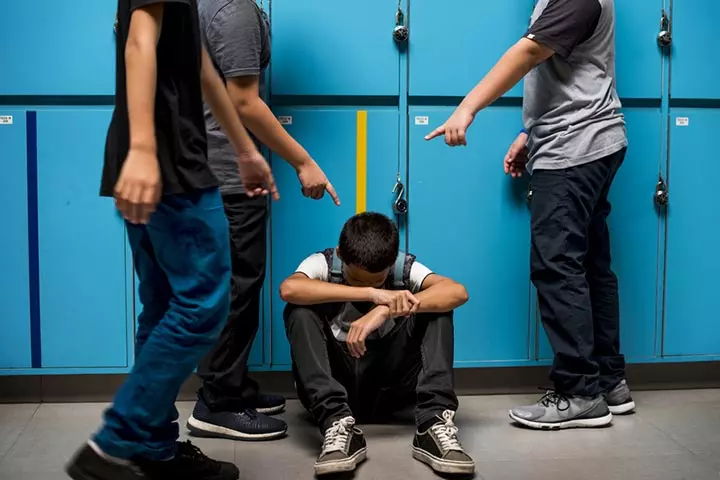
School violence can be in various forms, not all of which are physical. Here is a list of the most common types of school violence:
- A physical fight may involve slapping, pushing, punching, kicking, etc
- Violence against an individual by a gang
- Use of weapons
- Bullying – both physical and mental
- Verbal abuse
- Virtual violence in the form of electronic stalking, online harassment and such
Data collected for the 2019–20 school year shows 1.4 million incidents of crime with 77% of public schools recording one or more such incidents. This translates to 29 incidents per 1,000 students. However, as the graph shows, only 10 incidents per 1,000 students were reported to sworn law enforcement (1).

Percentage of violence recorded in US public schools
Source: The National Center for Education Statistics (NCES)Where Can School Violence Take Place?
Although school violence is often associated with violent incidents that occur on school property, it’s a broad term that encompasses several situations:
- Violence that happens during any school-related or school-sponsored event.
- Violence while the child is on the way to or from a school-related event.
- Violence while the child is on the way to or from school.
The Centers for Disease Control and Prevention (CDC) administered a nationwide Youth Risk Behavior Survey (YRBS) to high school students in 2019 to check its prevalence. It was conducted to determine the frequency of school violence. According to the findings, around eight percent of high school students had a physical fight on the school premises one or more times during the 12 months before the survey.
What Are The Causes Of School Violence?

There are a few common triggers that may lead to violence at school:
- Children often mistake power for respect. In trying to command the respect of their peers, they often resort to methods of abuse and violence. Conflict resolution training and peer mediation can help prevent such behavior.
- Children imitate what they see as ‘cool’ behavior, often associated with action heroes and on-screen characters. Violence in media and entertainment can desensitize children to aggressive behavior. Their young minds do not always perceive the boundaries between real and imaginary. In trying to emulate on-screen heroes, children can resort to violent acts.
- Children who have been victims of teasing or ridicule may resort to violence. They feel it gives them power and hides the negativity they faced.
- Children also wrongly display violent behavior in order to win the approval of peers and the opposite sex.
- Witnessing abusive or violent behavior at home, especially between parents or guardians, can also make children turn violent.
Are There Any Warning Signs?

Sometimes, children who have a violent tendency will show their aggression in other ways. Watch out for these signs which lead to violence in schools for effective crisis intervention:
- Cruelty to pet or stray animals.
- Being interested in playing with weapons of any kind.
- Especially obsessed with games or movies that involve violence.
- Bully or threaten other people.
 Experts say
Experts sayWhat Is The Impact Of School Violence?
School violence can have physical, psychological and social impact on children. Physical impacts may range from minor bruises or wounds to serious injuries such as fractures, or permanent disabilities. Corporal punishment may lead to poor mental health amounting to self harming and suicidal tendencies. Such children find it difficult to empathize with others and often develop violent behavior towards siblings and friends and even their children, later in life. They may find it difficult to form emotional attachments to others, and may react violently when physically comforted (reactive attachment disorder). Children may start attending school less often, have lower academic performance and increased drop-out rates (2) (3).
How To Stop School Violence?
Parents and teachers must collaborate to prevent violence and create a positive school environment. Here are a few ways you can help prevent and stop school violence:
1. Praise

- Praise and encourage children for their good behavior.
- Make sure to highlight all their achievements and take pride in the same.
- Reward children for their achievements and help them set positive goals.
2. Watch out for signs
- Always watch out for any sign of violent behavior.
- In case of aggressive behavior, find out its cause and offer solutions that can help resolve the conflict.
- Effective conflict resolution can aid in preventing bullying and future aggressive behavior. In addition, ensure that the school has adequate security measures and a zero-tolerance policy to prevent incidents.
- Speak to a student counselor if you notice worrisome signs of aggression in kids. They can offer advice on anger management and other ways of dealing with difficult emotions. In addition, schools should implement effective school discipline programs that focus on restorative justice.
3. Show your love
- Love and attention can treat most issues related to childhood trauma.
- Always show your child that you care and trust him.
- Be there for your child whenever he needs you. Parental involvement plays a vital role in children’s emotional development.
4. Know the friends
- Make an effort to know your child’s friends.
- Arrange home parties and encourage your child to interact with his friends to boost their social emotional learning.
- Ask your child about his friends and what he likes or dislikes about them.
- Encourage your child to seek mental health support if they are facing any issues with their friends.
5. Involve the community
- Engage with teachers and discuss any signs of violence you notice.
- Participate in school safety programs.
- Encourage your child to report any suspicious behavior and support their peers.
6. Extra-curricular activities

- Encourage your child to participate in extracurricular activities.
- Find out what activities your child likes and take him to hobby classes without fail.
- Make sure your child is always busy doing things he enjoys. They can also participate in community involvement activities which can help them foster empathy towards others.
Frequently Asked Questions
1. What role do schools play in preventing violence?
Schools are responsible for creating a safe environment for students. This includes implementing preventive measures such as training staff to recognize warning signs, establishing clear policies on bullying and violence, and providing resources for mental health support. Schools also collaborate with parents and the community to prevent violence effectively.
2. How can I deal with a violent child at school?
If you are a teacher dealing with violence in children, you must include non-aggressive steps to stop the behavior (4). These steps include:
• Removal of the violent child from the vicinity of potential victims
• Deprivation or removal of treats, desired activities, or rewards
• Time out
• Minimizing competition and confrontation
• Reinforcing expectations
• Early intervention
• Constant supervision by school resource officers
3. Can a teacher refuse to teach a pupil with a history of violence?
No rule allows a teacher to refuse to teach a violent child (4). However, they may use various techniques to manage violent or abusive students in the class (5). Additionally, they may attend workshops or seek assistance from mental health professionals to develop the skills needed to address conflicts effectively and promote a positive school culture.
4. Are school fights common?
School fights are quite common. Though the rate has come down in the last decade, in 2019, 22% of the students in grades nine to 12 were involved in school fights. However, in 2009, 33% of students were involved in school fights (7).
These are a few ways to stop school violence. The onus of preventing the violence equally lies with the school staff and the parents. Simultaneously, encourage students to engage in safe practices and focus on student awareness. Try to iterate the school policies to children and let them know that entertaining school violence could have irrevocable consequences. If your child is showing signs of being a victim of school violence, communicate with them and inform the school authorities about the issue. Alternatively, if your child is involved in school violence, seek help to enable them to correct their behavior.
Infographic: What Are The Risk Factors And Signs Of School Violence?
School violence is an issue that can have consequences for students, teachers, and the community. It can take many forms, including physical violence, verbal abuse, bullying, and even cyberbullying. Check out the infographic below to understand the causes of school violence and recognize the signs to help prevent it from occurring. Illustration: Momjunction Design Team
Illustration: Effective Ways To Stop School Violence
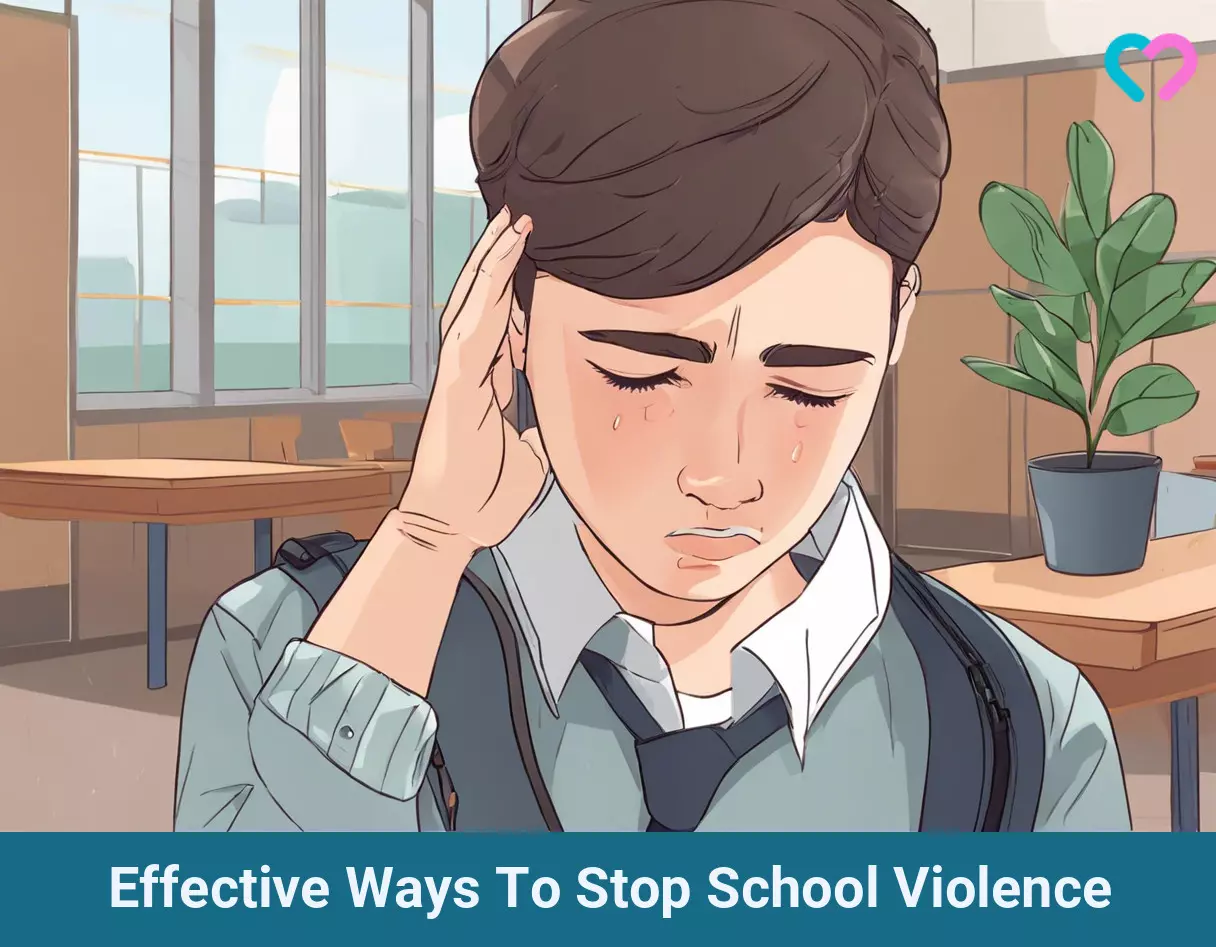
Image: Stable Diffusion/MomJunction Design Team
Explore effective strategies to help reduce the occurrence of school violence and and make the schools a safe place for the children.
References
- School crime.
https://nces.ed.gov/fastfacts/display.asp?id=49 - Protecting Children From Violence In The School; UNICEF.
https://www.unicef.org/protection/violence-against-children-in-school - Pietro Ferrara et al.; (2019);Physical psychological and social impact of school violence on children.
https://ijponline.biomedcentral.com/articles/10.1186/s13052-019-0669-z - PRACTICAL STRATEGIES FOR WORKING WITH STUDENTS WHO DISPLAY AGGRESSION AND VIOLENCE.
https://cyc-net.org/cyc-online/cycol-0306-guetzloe.html - Can I Refuse To Teach A Disruptive Class Or Pupil?
https://www.edapt.org.uk/support/knowledge-base/can-i-refuse-to-teach-a-disruptive-class-or-pupil/ - How Can I Manage Classroom Behaviour Effectively?
https://www.edapt.org.uk/support/knowledge-base/how-can-i-manage-classroom-behaviour-effectively/ - Physical Fights on School Property and Anywhere.
https://nces.ed.gov/programs/coe/indicator/a12/physical-fights - Violent Behavior In Children And Adolescents; American Academy Of Child & Adolescent Psychiatry.
https://www.aacap.org/AACAP/Families_and_Youth/Facts_for_Families/FFF-Guide/Understanding-Violent-Behavior-In-Children-and-Adolescents-055.aspx
Community Experiences
Join the conversation and become a part of our nurturing community! Share your stories, experiences, and insights to connect with fellow parents.
Read full bio of Catherine Mok
Read full bio of Sagari Gongala
Read full bio of Swati Patwal
Read full bio of Kavita Kankani






